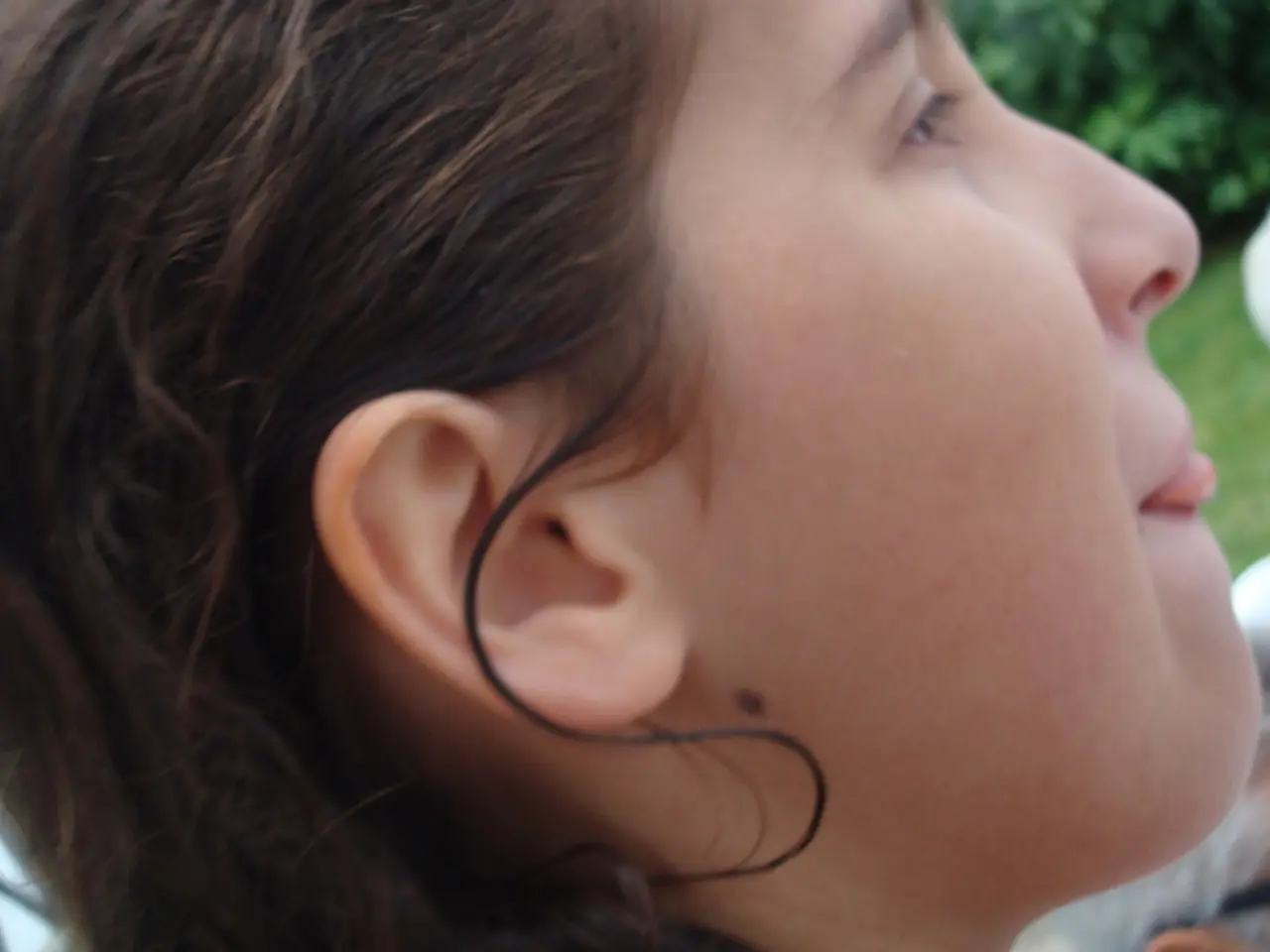Differentiating Skin Cancer from Moles: Recognizing Symptoms and Knowing When to Consult a Professional
In the realm of personal health, it's crucial for individuals to be aware of changes in their skin, particularly when it comes to moles and spots. Regular self-screenings can help in detecting any abnormalities early on [1].
The American Academy of Dermatology Association (AAD) advises standing in front of a full-length mirror, using a handheld mirror, and paying close attention to the size, shape, colour, and texture of each mole or spot during self-screenings [6].
A common method for self-screening is the 'ugly duckling test', which involves identifying any moles or spots that look different from other moles or spots on the body [2].
While moles are generally symmetrical, uniform in colour, have regular borders, and remain stable over time, melanomas often show signs of asymmetry, irregular or notched borders, multiple or changing colours, larger diameter, and evolution in size, shape, or symptoms like bleeding or itching [1][2][3][4][5].
To help distinguish suspicious moles from benign ones, the ABCDE rule is a widely recommended tool. This rule evaluates five key features: Asymmetry, Border irregularity, Colour variations, Diameter, and Evolution over time [1][2][3][4][5].
If a mole exhibits any ABCDE warning signs or changes over time, it should be examined by a dermatologist promptly [2][3][5]. Early recognition using this method significantly improves outcomes for melanoma treatment [4].
It's important to note that a dysplastic nevus, a type of benign mole that appears different from common moles, can have a large size, a mixture of colours, an irregular shape, and an undefined edge [3]. Although having many dysplastic nevi increases the chance of developing melanoma, most do not turn into cancer [7].
If a person develops a new mole or notices changes to their existing moles, they should contact a doctor [4]. Additionally, those with a family history of melanoma or those with fair skin or a history of sunburns should have their skin checked regularly by a doctor or dermatologist [4].
In conclusion, regular self-screenings and prompt medical attention can help in the early detection of skin cancer, potentially leading to better treatment outcomes. Remember, the ABCDE rule is a simple, effective guideline for early detection of melanoma and can help differentiate it from common benign moles. If you notice any unusual or changing moles or spots on your skin, or have any concerns about a spot on your skin, make an appointment with a doctor or dermatologist for a professional evaluation.
References:
[1] American Academy of Dermatology. (2021). ABCDE Rule. https://www.aad.org/public/diseases/skin-cancer/melanoma/abcs-of-melanoma
[2] Mayo Clinic. (2021). Melanoma: Early detection, diagnosis & treatment. https://www.mayoclinic.org/diseases-conditions/melanoma/diagnosis-treatment/drc-20374194
[3] Skin Cancer Foundation. (2021). Dysplastic Nevus. https://www.skincancer.org/skin-cancer-information/types-of-skin-cancer/dysplastic-nevus
[4] American Cancer Society. (2021). Skin Cancer Early Detection, Diagnosis & Staging. https://www.cancer.org/cancer/skin-cancer/detection-diagnosis-staging.html
[5] National Cancer Institute. (2021). ABCDE Rule. https://www.cancer.gov/types/skin/melanoma/patient/melanoma-pdq#section/_138
[6] American Academy of Dermatology. (2021). Skin Self-Exam. https://www.aad.org/public/diseases/skin-cancer/skin-cancer-prevention/skin-self-exam
[7] American Academy of Dermatology. (2021). Dysplastic Nevus. https://www.aad.org/public/diseases/skin-cancer/dysplastic-nevus
- Recognizing changes in moles and spots on the skin is essential for early detection of skin cancer, such as melanoma, which can be life-saving.
- The American Academy of Dermatology (AAD) recommends the 'ABCDE rule' for self-screening, evaluating a mole's asymmetry, border irregularity, color variations, diameter, and evolution over time.
- It's important to be aware that a dysplastic nevus, though benign in most cases, can increase the risk of developing melanoma due to its large size, irregular shape, and multiple color spots.
- If a mole exhibits any ABCDE warning signs, changes over time, or is metastatic, prompt medical attention is crucial to improve cancer treatments' outcomes.




